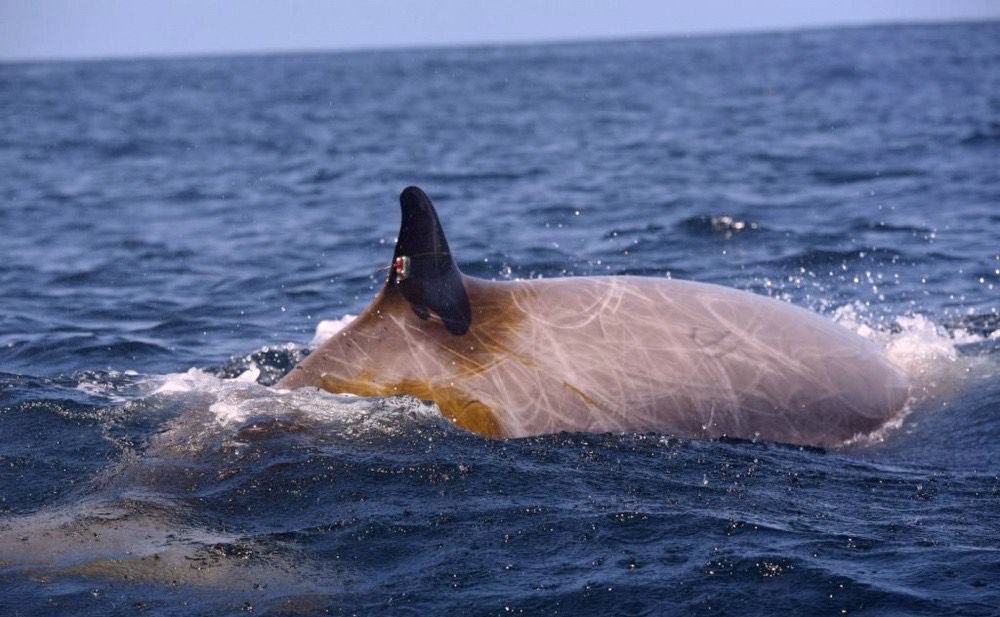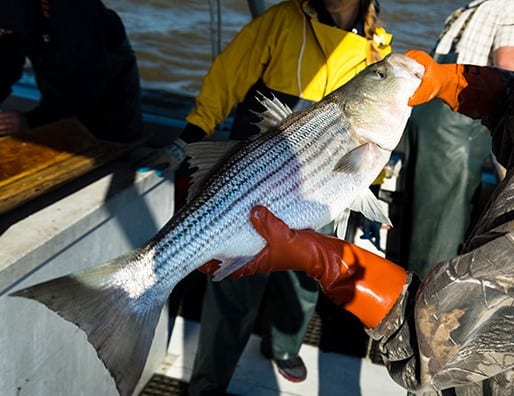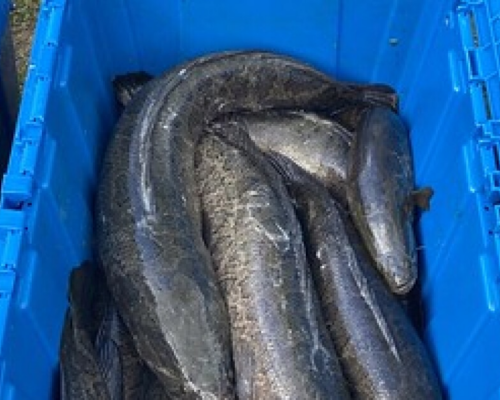To help scientists learn more about how sonar affects whales, the USS Cole and her crew recently took part in an important marine mammal-focused mission near Chesapeake waters.
The destroyer helped in the Atlantic Behavioral Response Study (BRS), a project created to see how beaked and pilot whales react to sonar as they move through the ocean on their migratory routes.
Whales “participating” in the study, which is being conducted over time, are tagged off the Virginia Capes and the coast of North Carolina with satellite-linked telemetry tags, and in some cases, acoustic tags. The tags allow researchers to see what the mammals do after nearby sonar has been activated.
For its part in the project, the Navy says the Cole used its active sonar in a controlled way–at a set place and time–so that researchers could monitor how two pods of tagged whales behaved in response.
Ron Filipowicz, an environmental policy specialist at U.S. Fleet Forces Command in Norfolk, says the destroyer’s contribution was no small feat. “It’s not an easy thing for a ship to do, and the Cole supported us tremendously.”
Researchers have been tracking the movements of whales in the area for years and began conducting controlled sonar experiments like this one in 2017, says Joel Bell, a senior marine resources specialist at Naval Facilities Engineering Command (NAVFAC) Atlantic.
Bell tells Bay Bulletin that in an ideal scenario, perhaps a dozen whales would be tagged several weeks in advance of a controlled exposure to sonar. This way, researchers would have a good baseline of the whales’ behavior so that any changes caused by sonar would be more noticeable.
Although the team was only able to deploy two tags during this specific part of the project because of a tropical storm, Bell considers the effort a win. “This particular event with the Cole was very successful because we were able to coordinate with the Navy ship and use real tactical sonar for the exposure.”
Bell adds that while pilot and beaked whales aren’t commonly victims of run-ins with ships, as humpback whales in the Hampton Roads region are, sonar may be another story.
“These two species aren’t a particular concern for vessel strikes, but beaked whales do seem to be susceptible to mid-frequency sonar, which is the motivation for this project supporting environmental compliance for U.S. Navy training and testing activities,” he says.
Because nearby Norfolk is home to a large number of Navy vessels that use sonar, data collected in experiments such as the one that involved the USS Cole is key to understanding how these ships and those in other waters may impact the environment.
“By using the best available science, we can move forward with our environmental impact studies and work out the best way that the Navy should mitigate while conducting our activities, and how we can contribute to not harming the environment in the most effective way possible,” Filipowicz said.
Once collected, the Navy shares data with the National Marine Fisheries Service and other scientific organizations.
–Laura Adams Boycourt




